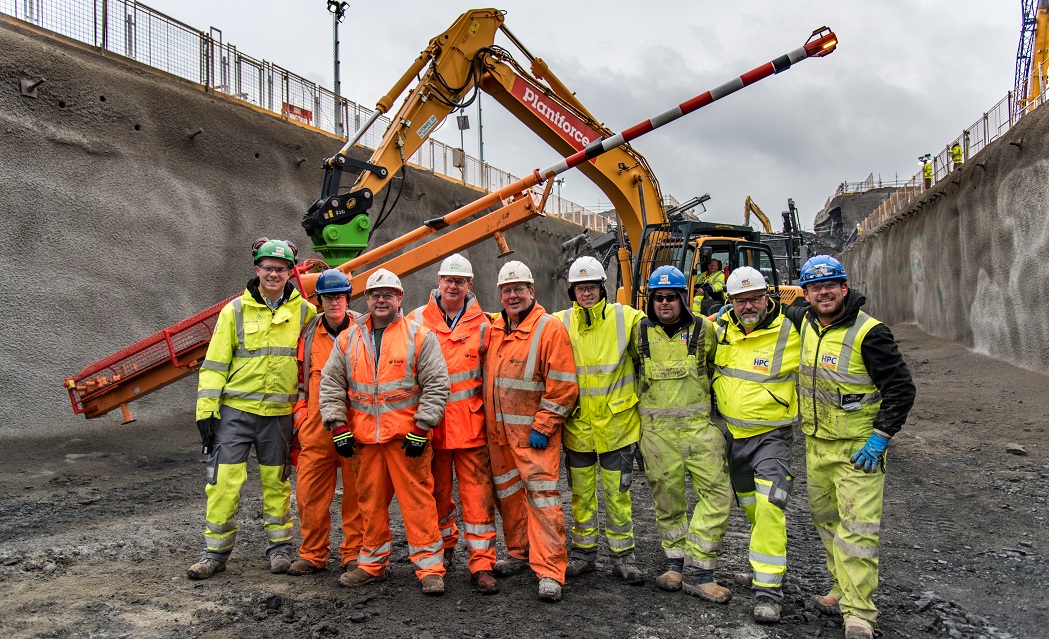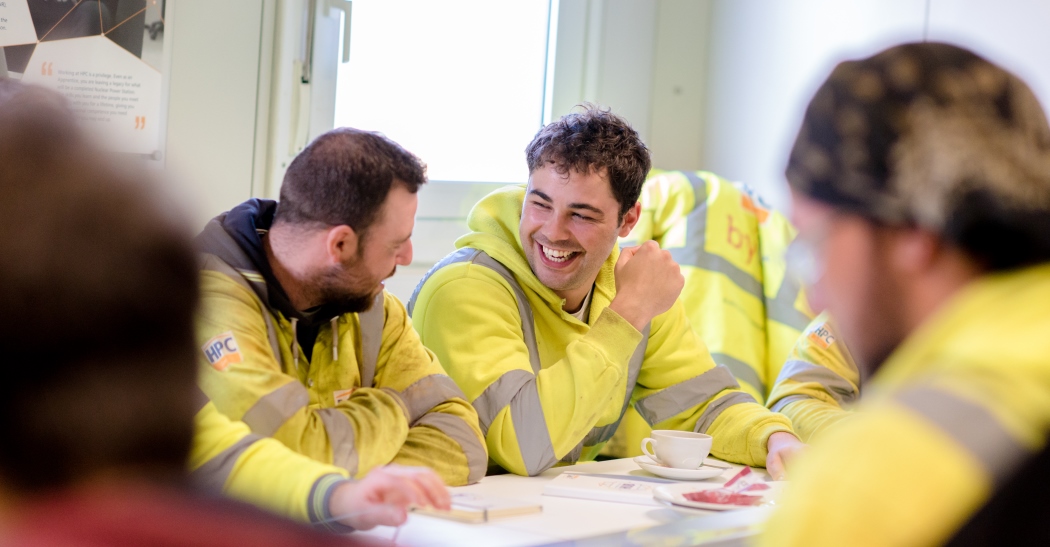
Fuelling the future with innovation
Just as EDF Energy is bringing lessons from recent power station builds to Somerset, the ground-breaking innovations and new ways of working developed to improve the construction of Hinkley Point C are shaping the way ahead for future infrastructure projects, including the proposed Sizewell C station in Suffolk.
Plugged in looks at a few of these innovative techniques, technologies and systems, and also finds out how Hinkley Point C is equipping a new generation of construction and engineering workers with industry-leading tools and skills.
TECHNOLOGICAL AND PLANT INNOVATIONS
Nailing it
Faced with the prospect of installing more than 110,000m of steel bars by hand — contractor Kier BAM and Hinkley Point C’s Enabling team designed and built a bespoke machine to do the job.
They came up with a Mechanical Ground Nail Installation Beam capable of installing single lengths of steel bar up to 14m long and 140kg in weight in a single pass.
And, as well as speeding work up dramatically, their invention greatly reduces potential safety risks to Hinkley Point C team members, by eliminating the need for manual handling and working at height.
Trevor Opie, Kier BAM Excavator Operative, said: “I can pick up the beam, raise it to the borehole and install a 12m bar in one go without anyone having to touch the steel bar.”
Prefabrication – containment liner
To avoid weather delays like those experienced at Flamanville 3, where one ring took 40 days to construct, Hinkley Point C’s entire steel containment liner will be prefabricated in five parts and covered with a roof to protect it from the elements. With this method, a ring is expected to take under 25 days. The world’s largest crane will be needed to lift 640 prefabricated pieces weighing up to 1,100 tonnes.
Concrete application
The build will need more than 1.2 million cubic metres of consistently high-quality concrete. Hinkley Point C’s own batching plant mixes the concrete to a designed and tested spec. A concrete website coordinates contractors’ activities, making sure ‘special pours’ of high volumes aren’t interrupted. A specially designed app tells everyone precisely where and when concrete is produced each day.

Example of a 3D model
A model way to avoid clashes
With 2,500 rooms each, the two Nuclear Island units are a complex build. So the designers at Hinkley Point C are using cutting-edge, 3D modelling to prevent the clashing of the 7.6 million components needed to build the new power station. Although 3D modelling isn’t a new innovation, it has never been used on the same massive scale as at Hinkley Point C.
SYSTEMS AND PROCESS INNOVATIONS
Design done and dusted
Changing or creating designs for a nuclear power station is expensive and involves huge amounts of documentation. The basic design of this type of reactor in the UK is made up of 100,000 documents, for example, while the detailed ‘execution design’ involves more than a million documents.
But now, the regulatory and design paperwork done by EDF Energy for Hinkley Point C has been approved for use on future UK projects, including the proposed power station at Sizewell C. And, not having to repeat the work is going to mean significant savings in both time and money.
Controlling costs
Three ‘instrumentation and control’ systems are being installed at Hinkley Point C: two computerised systems to control the power station and manage significant plant safety events that were designed for Flamanville 3, and a third non-computerised back-up safety system which had to be designed, developed, tested and qualified before approval for use in the UK.
Using that technology at Sizewell C will mean savings of many millions of pounds in development costs.
PEOPLE AND SKILLS INNOVATIONS
Apprentice and Skills team
The build’s main contractors are working closely with training providers across the South West to meet the demand for skilled local workers for Hinkley Point C and its supply chain.
As part of Hinkley Point C’s commitment to helping to create a skills legacy locally and right across the UK, 1,000 new apprenticeships will be created during the build. From trainee steel fixers, to nuclear scientists, chefs and project controllers, apprentices will be vital to both the Hinkley Point C build and for the future of the construction and engineering industries.

Co-ordinating contractors – MEH Joint Venture
China’s Taishan nuclear power station build showed the benefits of bringing contractors into a single organisation to share expertise and work collaboratively.
At Hinkley Point C, the contractors Altrad, Balfour Beatty Bailey, Cavendish Nuclear and Doosan Babcock are coming together as the MEH Joint Venture to deliver the Mechanical, Engineering and HVAC (heating, ventilation and air-conditioning) elements of the build.
As well as making sure everyone is working together rather than competing for access to tight spaces, the alliance will also create new industrial capacity and jobs by manufacturing specialist pipework in Britain.
